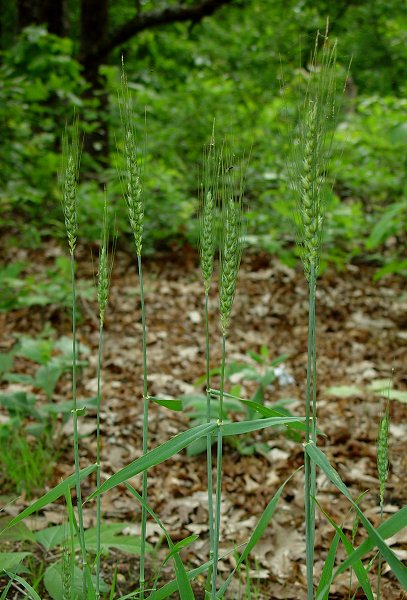Triticum aestivum L.
Wheat

Introduced
CC = *
CW = 5
MOC = 28
© DETenaglia
Triticum aestivum L.Wheat | |
 |
Introduced CC = * CW = 5 MOC = 28 |
© DETenaglia |
|
Family - Poaceae/Triticeae Stems - To 1.2m tall, erect, simple, multiple from base, forming tufts, typically glabrous, glaucous, annual.
Leaves - Leaf blades to +/-30cm long, +/-9mm broad, glabrous or somewhat strigose, entire, bluish-green. Auricles (when present) with a slightly wavy margin, scarious. Ligule a short membrane to +/-1mm tall. Leaf sheath open, glabrous or with the lowermost pubescent.
Inflorescence - Single terminal cylinder of spikelets to +10cm long. Spikelets single at each node of the inflorescence, somewhat depressed into the bent axis. Axis glabrous.
Flowers - Spikelets light green with darker green lines, to 10mm long, ovoid. Glumes either with a short tooth at the tip or sometimes with an awn up to 6cm long. Lemmas typically with an awn reaching 8cm in length, sometimes without the awn and just with one or two short teeth.
Flowering - May - July. Habitat - Widely cultivated but also planted along roadsides and in disturbed areas. Escaped to waste ground, railroads. Origin - Developed through cultivation possibly in the Middle East. Other info. - Triticum is the common "wheat" of cultivation. Many cultivars and subspecies of wheat exist, which is why the plant can be so variable. Photographs taken along Hwy 76, Reynolds County, MO., 5-23-03. |